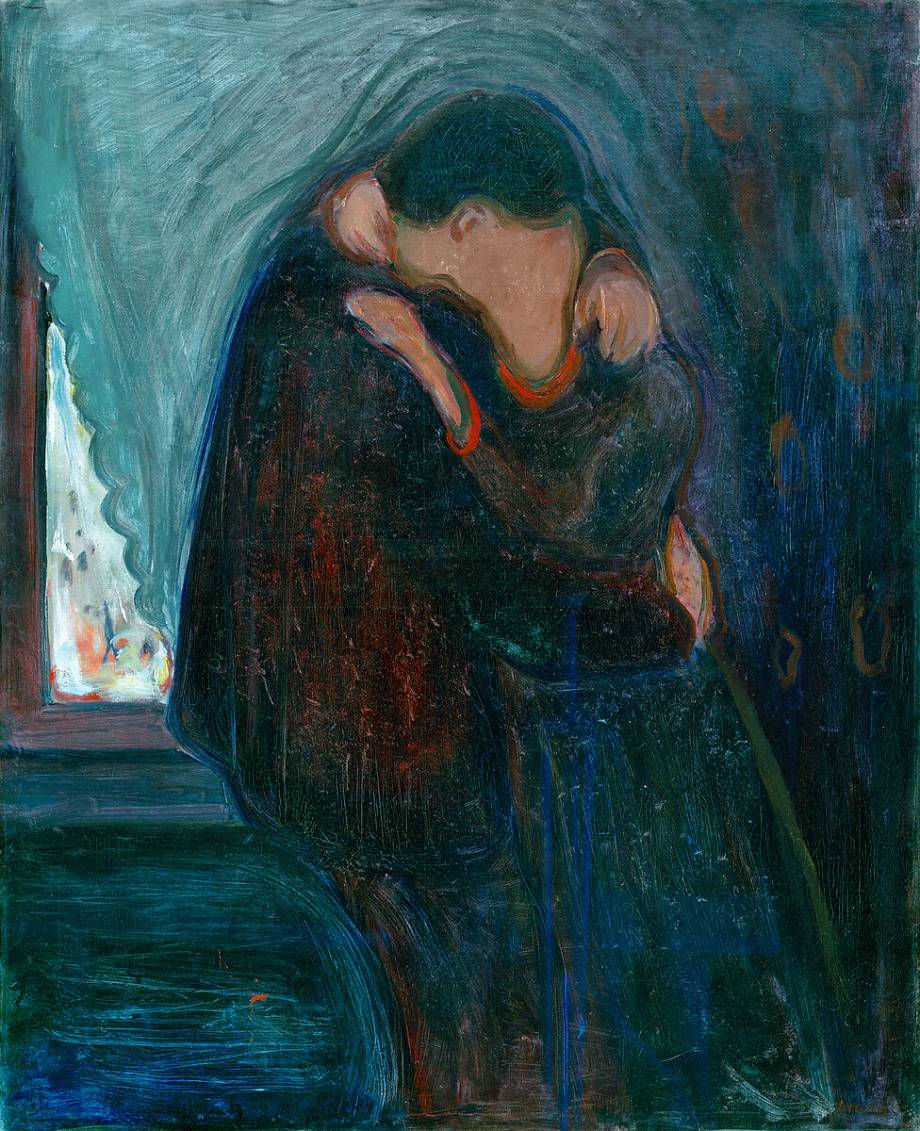Shop art print and framed art The Kiss by Edvard Munch
Customise
Your art print
The Kiss OF Edvard Munch
The Kiss
Edvard Munch's The Kiss: an essential symbolist work
The history of the work "The Kiss"
The painting christened "The Kiss" is often considered representative of European Symbolist art of the late 19th century. Produced in 1897, this work by Edvard Munch embodies a flourishing period for the Norwegian artist, who was beginning to achieve a degree of success thanks to his appearances at the Paris and Berlin salons des artistes indépendants.
In Munch's personal life, this period was also marked by the artist's sentimental and psychological troubles, as he experienced conflicting romantic relationships."The Kiss" can thus be interpreted as a reflection of this duality between passionate love and suffering.
.It's also worth noting that Munch produced several versions of "The Kiss", each bringing a new variation of composition and color. This theme, this iconography, therefore takes on a particular intensity and importance in the artist's work.
Work description
To fully appreciate "The Kiss", it's essential to describe the key elements that make it a unique canvas.In this painting, two human figures are depicted kissing. What immediately strikes the viewer is the way the lovers' faces literally merge into each other, forming a single entity.
.This fusion of bodies evokes a sense of intense intimacy, but also an idea of self-loss in the face of the amorous embrace.The features of the characters are deliberately imprecise to create a blurred effect, accentuating this fusional aspect and making it difficult to distinguish between man and woman.
The chromatic palette is a perfect example of this.
The chromatic palette chosen by Munch is particularly interesting, combining warm hues with cool tones. Reds and oranges dominate the canvas overall, symbolizing passion and sensuality, while blues and greens introduce a touch of melancholy and disquiet, echoing the violence of love that is omnipresent in the painter's work.
Finally, Munch's chromatic palette is particularly interesting.
Finally, the background of the painting is occupied by a succession of curved lines, metaphorically representing the circular energies of this suspended moment. This technique lends dynamism to the painting, while highlighting the embrace of the main characters.
An example of Symbolist art
It's undeniable that "The Kiss" belongs to the Symbolist movement, characterized by a search for the ideal, a predilection for mystical or dreamlike themes, and a desire to represent feelings and sensations rather than forms. In this context, the emphasis placed on the interiority of the characters and the fusional representation of the couple illustrate this artistic approach well.
In addition, "The Kiss" contains several recurring elements in Munch's work, such as the presence of the femme fatale motif, or the tension between amorous attraction and repulsion. Similar themes can be found in other major works by the artist, such as "Madonna" or "Vampire".
A landmark work for both artist and audience
Although "The Kiss" is less well known than "The Scream", it nevertheless remains an essential canvas in Edvard Munch's artistic output. Its original composition, broad, undulating brushstrokes, vibrant colors and symbolist approach make it a perfect illustration of the painter's preoccupations.
This artwork is a painting from the modern period. It belongs to the expressionism style.
« The Kiss » is kept at Munch-museet, Oslo, Norway.
Find the full description of The Kiss by Edvard Munch on Wikipedia.



































